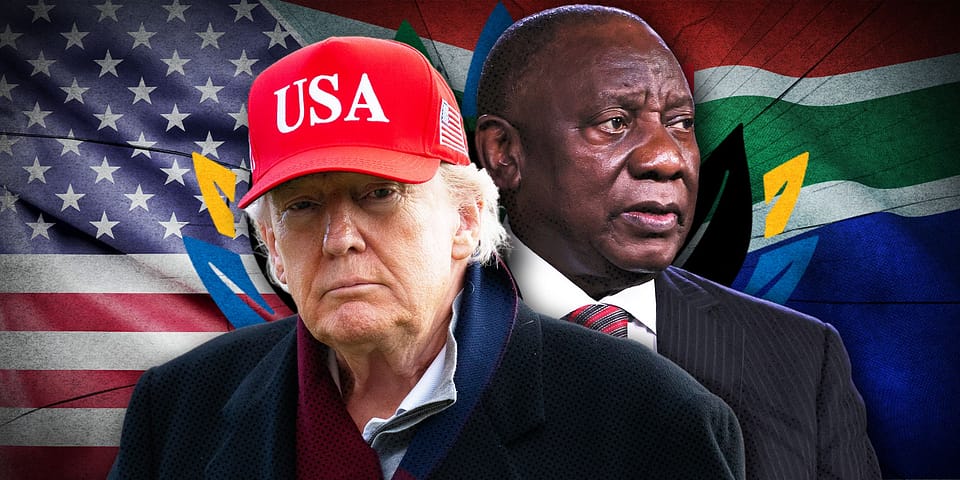In a rapidly escalating trade dispute that has sent ripples through global markets, China has called on U.S. President Donald Trump to “correct mistakes” and listen to “rational voices” regarding his administration’s aggressive tariff policies. The statement, issued by China’s Ministry of Commerce on April 13, 2025, reflects Beijing’s growing frustration with what it describes as unilateral and protectionist measures that threaten the stability of international trade. As the world’s two largest economies lock horns in a tit-for-tat tariff war, businesses, investors, and consumers are bracing for the fallout. This article explores the implications of China’s plea, the economic stakes, and the broader context of U.S.-China trade relations in a way that resonates with everyday readers while grounding the discussion in business realities.
The Tariff Tussle: What’s Happening?
At the heart of the dispute are Trump’s so-called “reciprocal tariffs,” a policy cornerstone of his second term aimed at addressing perceived trade imbalances. Since February 2025, the U.S. has imposed successive rounds of tariffs on Chinese goods, starting with a 20% levy tied to concerns over fentanyl smuggling, followed by a 34% tariff in early April, and culminating in a staggering 125% hike on Chinese imports announced mid-week. These measures, which Trump has branded as part of a “Liberation Day” to protect American workers, have pushed the effective tariff rate on Chinese goods to 145% in some cases—an unprecedented level in modern trade history.
China, unwilling to stand idly by, has retaliated with its own countermeasures. On April 10, Beijing imposed a 34% tariff on U.S. goods, followed by a dramatic escalation to 125% on American imports by April 11. Beyond tariffs, China has suspended exports of critical agricultural products and rare earth elements, signaling its readiness to leverage its economic strengths. The Chinese Ministry of Commerce has labeled Trump’s tariffs as “unilateral bullying,” arguing that they violate international trade rules and harm not just China but the global economy.
On Sunday, April 13, China’s tone shifted slightly toward conciliation—or at least a call for de-escalation. The Ministry urged the U.S. to “completely cancel” the tariffs, describing a recent U.S. exemption for consumer electronics (like smartphones and laptops) as a “small step” but insufficient to mend the damage. Beijing’s spokesperson emphasized the need for mutual respect and warned that continued escalation could isolate the U.S. economically. Posts on X echoed this sentiment, with some users framing the electronics exemption as a sign of Trump “blinking” under pressure, though others saw it as a pragmatic move to shield American consumers from immediate price hikes.
Why Tariffs Matter to Businesses and Consumers
For those running businesses or shopping at stores, tariffs aren’t just abstract policy debates—they hit wallets and bottom lines. Tariffs are essentially taxes on imported goods, paid by importers (often U.S. companies) and frequently passed on to consumers through higher prices. A 125% tariff on Chinese goods—everything from electronics to clothing—could make everyday items significantly more expensive. For example, a $100 pair of sneakers could jump to $125 or more if retailers absorb the cost, which many may struggle to do.
American businesses reliant on Chinese supply chains, from small retailers to tech giants like Apple, face a squeeze. Wedbush Securities analyst Dan Ives called the electronics exemption a “bullish” move for Big Tech, noting it eases pressure on companies like Nvidia and Microsoft. But for industries without exemptions, the math is grim: higher costs, slimmer margins, or lost sales if customers balk at price increases. The University of Michigan’s Consumer Sentiment Index recently dropped to 50.8, with inflation expectations soaring to 6.7%—the highest since 1981—partly due to tariff fears.
On the flip side, Trump argues these tariffs will boost U.S. manufacturing by making domestic products more competitive. His administration claims the policy has already prompted over 75 countries to seek trade negotiations, suggesting leverage to reshape global trade. However, critics warn that manufacturing jobs won’t materialize overnight, and in the meantime, businesses face uncertainty. A Reuters report noted that Chinese firms, adept at rerouting trade through countries like Vietnam, may mitigate some losses, but American importers have fewer quick fixes.
China’s Playbook: Resilience and Retaliation
China’s response blends defiance with strategic outreach. President Xi Jinping, in remarks to Spain’s Prime Minister Pedro Sanchez, called for a united front with the EU against U.S. “bullying,” signaling an intent to rally global support. Beijing is also bolstering ties with Southeast Asia, with Xi’s upcoming visits to Vietnam, Malaysia, and Cambodia aimed at deepening regional trade networks. The People’s Daily, a state mouthpiece, declared confidently that “the sky won’t fall,” projecting resilience despite market turbulence in Hong Kong and Shanghai.
Economists estimate China’s GDP could take a 0.5 to 1% hit from U.S. tariffs, a significant but not catastrophic blow for an economy targeting 5% growth. Beijing’s toolkit includes export restrictions on rare earths—critical for tech and defense industries—and potential currency adjustments to offset tariff impacts. Yet, China’s call for “rational voices” suggests an openness to dialogue, perhaps recognizing that a prolonged trade war benefits neither side. As one X user put it, “China’s playing chess while Trump’s playing checkers,” hinting at Beijing’s long-game approach.
The U.S. Perspective: Trump’s High-Stakes Gamble
Trump’s tariff strategy is a high-stakes bet on economic nationalism. Speaking aboard Air Force One, he downplayed market volatility, predicting a stronger dollar and framing tariffs as a tool to force fairer trade deals. His team, including Press Secretary Karoline Leavitt, insists that countries like China will “blink first” under pressure. The 90-day pause on tariffs for most countries (excluding China) announced last week was spun as a diplomatic win, though analysts see it as a retreat to avoid a broader recession.
The bond market tells a different story. U.S. 10-year Treasury yields have spiked, signaling investor unease, while gold hit record highs as a safe-haven asset. Trump’s claim that tariffs are paid by exporters (China) rather than importers (U.S. firms) oversimplifies the reality—importers foot the bill, and consumers often bear the cost. The White House’s narrative hinges on long-term gains, but short-term pain is already evident, with stock markets whipsawing and business confidence wavering.
Global Ripples: Beyond U.S.-China
The U.S.-China tariff war doesn’t exist in a vacuum. Allies like Canada and Mexico, spared from the latest rounds, are still grappling with earlier auto tariffs. The EU, facing a 20% U.S. tariff, is urged by Xi to resist American pressure, though Brussels prefers a “level-headed” approach, per Ursula von der Leyen. Developing nations, particularly in the Global South, risk collateral damage as trade flows shift and prices rise. China’s WTO complaint against U.S. tariffs could rally smaller economies, but its outcome is uncertain.
For India, a key player in Bharat24’s coverage, Trump’s tariff pause has sparked cautious optimism. Ministers like Piyush Goyal stress India’s refusal to bend under pressure, while economists see potential for India to capture market share if Chinese exports falter. However, Indian businesses reliant on Chinese inputs, like electronics manufacturers, face supply chain headaches.
What’s Next? A Path to De-escalation?
China’s plea for rationality isn’t a white flag—it’s a calculated push for negotiation. Both sides have cards to play: the U.S. with its massive consumer market, China with its manufacturing dominance and rare earth leverage. Trump’s openness to a “good deal” with Xi, voiced on April 9, hints at room for talks, but his insistence on “punching back harder” suggests brinkmanship will persist. Beijing, meanwhile, is betting on global alliances and domestic resilience to weather the storm.
For businesses, the immediate task is navigating uncertainty—hedging against price spikes, diversifying suppliers, or lobbying for exemptions. Consumers may need to brace for higher costs, from groceries to gadgets, unless cooler heads prevail. As one X post quipped, “Tariffs are like a bar fight—everyone gets bruised, and nobody really wins.”
In the end, China’s call to “correct mistakes” is less about admitting fault and more about urging a return to mutual benefit. Whether Trump heeds the “rational voices” Beijing invokes will shape not just U.S.-China trade but the global economy for years to come. For now, the world watches, wallets in hand, as two giants spar over the future of commerce.
Sources: Reuters, CNN, The Times of India, Newsweek, X posts
Discover more from News Diaries
Subscribe to get the latest posts sent to your email.



